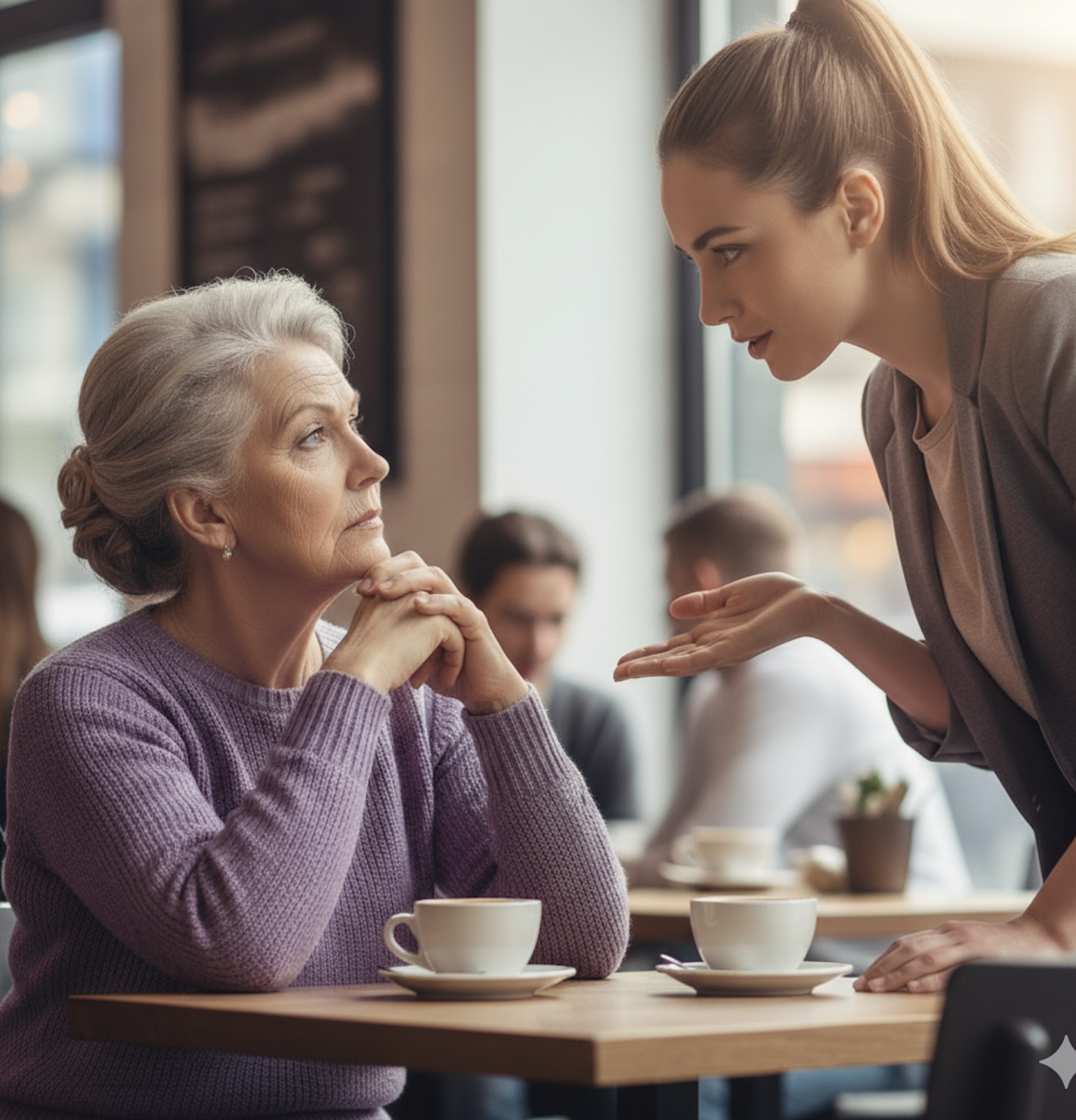

By Susanna P. Barton
One of the big things you learn as a fledgling student of Gerontology is that ageism is real and it is exceedingly harmful, and that elderspeak is one way ageism manifests in our relationships with older adults. We should embrace neither, capiche? Today’s column will unpack what ageism and elderspeak are and why we should avoid them.
Ageism is a major social issue in our world today. According to the World Health Organization, ageism is: “The stereotypes (how we think), prejudice (how we feel), and discrimination (how we act) towards others or ourselves based on age. Ageism is pervasive, affects people of all ages from childhood onwards, and has serious and far-reaching consequences for people’s health, well-being, and human rights. Ageism can be found within institutions, in interactions between people, and within ourselves. Globally, 1 in 2 people are ageist against older people, and in Europe, younger people report more perceived ageism than other age groups.”
Ageism has many different forms. We are constantly confronted with it in the media – images of frail, cranky, and grey-haired adults in ads and shows, and characters projecting personas that are cognitively and physically impaired or incapable of learning new things. In healthcare, many older adults face ageism in the way they receive medical treatment or advice – with some physicians assuming a patient’s symptoms are “just part of being old.”
A 2022 study from the University of Oklahoma, Norman, and the University of Michigan points to the ubiquitous nature of ageism. Of the older adults surveyed, 93 percent had experienced one of the 10 forms of ageism they studied, which include statements like “people insist on helping me with things I can do on my own” or “people assume I have difficulty with cell phones and computers.”
While ageism is abhorrent in any context, it is particularly prevalent and devastating in the workplace. A recent study from AARP indicates 78 percent of older workers have experienced age discrimination at work, a figure that tops the charts since AARP started tracking this data in 2003. The study also shows 96 percent of workers think age discrimination laws should be more stringent.
The consequences of ageism are devastating for older adults, whether they’re in the workplace or charting their path for second-half success. A 2020 review of 422 studies of 7 million participants around the world – the largest study of its kind – found ageism creates negative outcomes for older adults in 96 percent of the studies reviewed. Ageism is not only rude, crude, and socially unacceptable – it is injurious and even lethal, yet somehow still socially acceptable in some settings.
So, let’s stop here and let me share another important fact from my Gerontology studies. To avoid promoting ageism in daily communication, language, and engagements, you must purge ageist terms from your vocabulary. Those words include seemingly acceptable and sadly common words like elderly, senior citizen, old people, and yes, Boomer. Instead, describe an adult by their age (65-year-old woman), by their age range (adults 65-plus), or by the always accurate, inclusive catch-all, “older adults.” Just say older adults, and you’ll do your part in curbing ageism in conversation.
Another kind of word or phrasing to look out for is talk described in Gerontology circles as “elderspeak.” This term came up over and over again in my Gerontology master’s studies at the University of North Carolina Greensboro. Never heard of it? I bet you have. Let’s get to the bottom of it, Sweetie.
Elderspeak is defined as a modified form of speech used by younger adults when communicating with older adults. It is characterized by simplified vocabulary and sentence structure, slower speech, exaggerated intonation, and the use of overly-endearing terms like “sweetie” or “dear.” Elderspeak often stems from stereotypes about older adults having reduced cognitive abilities and can be perceived as patronizing or disrespectful.
All the Gerontology experts agree that elderspeak is ageist and demonstrates implicit bias against aging. It also impacts how older patients respond in a healthcare setting, how treatment is administered, and how older adults thrive in social settings. I get it! And I also think I have been an elder-speaker many times in life before thinking about how hurtful it can be.
My missteps began as a child communicating with my great-grandmother, Pennye. Mama Pennye lost her hearing as a young adult, and for as long as I knew her, she wore a HUGE shoebox-size hearing aid receiver around her neck. Having a conversation with Mama Pennye involved screaming into her bosom so she could hear what you were carrying on about. Was that ageist? Or practical? I don’t know, but I think that screaming carried over to the way I spoke with other older adults in my life. I think I got the sense that older adults couldn’t hear well. I continued this practice until only recently, when my Gerontology studies underscored my shortcomings in this realm of communication. Anyway, we learn new things every day.
So, the next time you call someone who’s older than you are Honey or Sweetheart or something worse, consider whether you would like someone calling you that or not. Ageism is real, and you don’t want to be the one who embraces it.
Susanna Barton, a member of Jacksonville Mayor Donna Degan’s subcommittee on elder care and a Gerontology master’s student at the University of North Carolina Greensboro, has worked as a professional writer in Jacksonville for nearly 30 years and is the founder of the Grand Plans online community, podcast, newsletter, and blog. Her book Grand Plans 2.0: How to Mitigate Geridrama in 20 Easy Steps and its accompanying workbook, the Grand Planner 2.0, are available in local stores and on Amazon. For more information, http://www.mygrandplans.com.